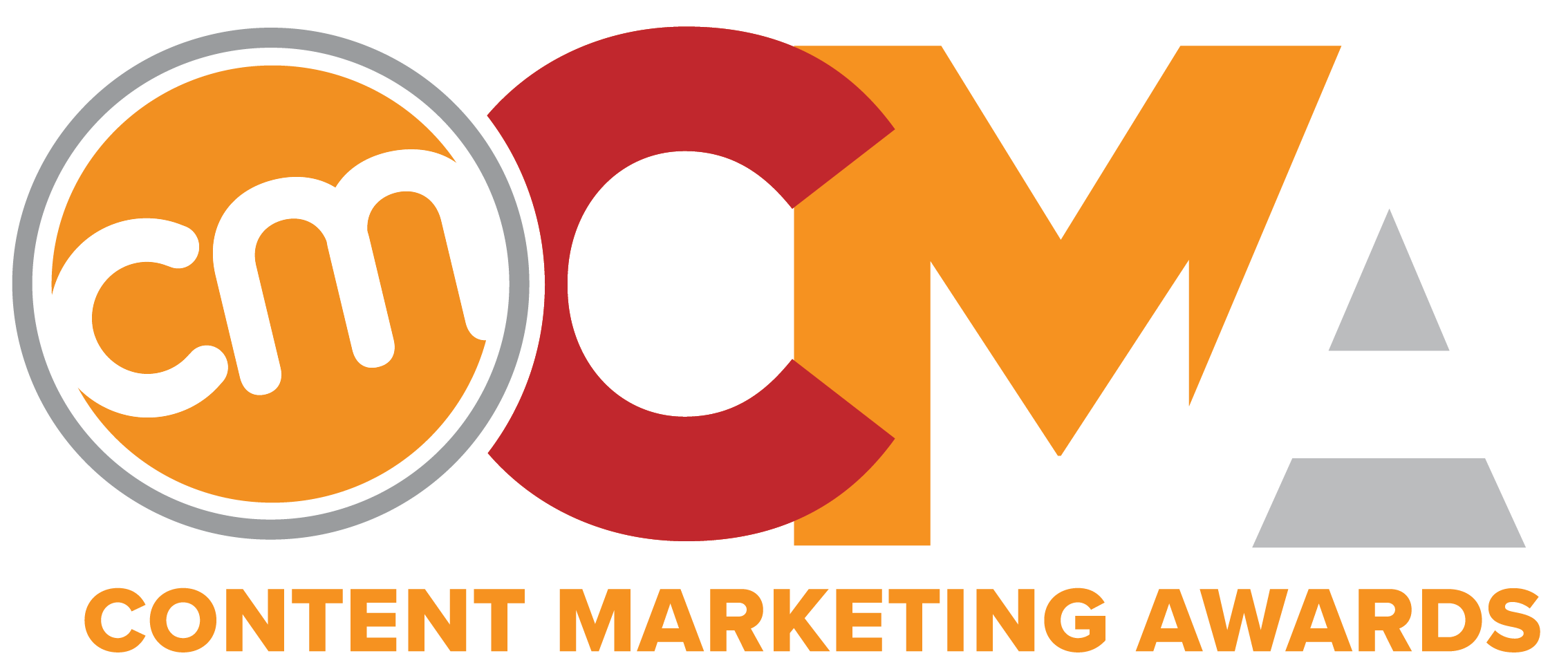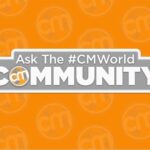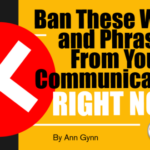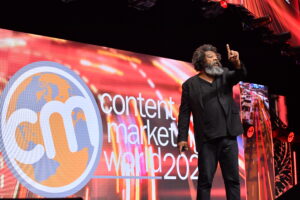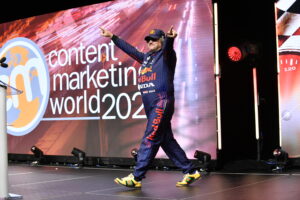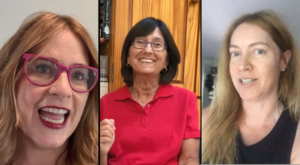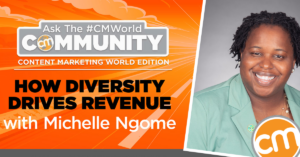 Did you know BIPOC-black, indigenous, people of color- markets have a buying power of $4 Trillion?
Did you know BIPOC-black, indigenous, people of color- markets have a buying power of $4 Trillion?
The world is evolving, especially the platforms we love to support. Therefore, it is important to understand the methods to market to diverse audiences. As marketers, we are responsible for the messaging and mediums that we create in order to market our brands.
During this week’s Ask the #CMWorld Community livestream, CMI host Amanda Subler interviews CMWorld speaker Michelle Ngome, founder of Line 25 Consulting and the African American Marketing Association to discuss how to tap into diverse markets with a solid, inclusive marketing strategy.
Key Takeaways from the interview:
- BIPOC consumers have a buying power of $4 Trillion so it’s important that marketers learn different demographics that they can include in their marketing efforts. Doing market research will help.
- Be sure the language you are using is inclusive. Be mindful not only of the words you use but the tone as well.
- Having an inclusive marketing team in place, will help with your overall inclusive marketing strategy. Work with HR to see what gaps you have in your marketing team as far as diversity.
Watch this interview then come hear Michelle Ngome speak at Content Marketing World 2022 You’ll soon be able to check out the agenda here.
You can participate in the interactive Ask the #CMWorld Community livestreams most Mondays at Noon ET on LinkedIn, YouTube, Facebook or Twitter. Check out some of the past interviews in this playlist.
Amanda Subler (06:27):
You say, if you don’t have an inclusive marketing strategy, you don’t have a growth marketing strategy. So what is inclusive marketing and why is it more important than ever?
Michelle Ngome (06:51):
So inclusive marketing is really your strategic efforts to market, to diverse communities. So this can include African Americans, Asian Americans, LGBTQ, Hispanic people with disabilities, military women, all types of diverse communities. And it’s important because America has always been a melting pot. And these communities, people, we have businesses, families, we’re buying products, we’re making income, we’re consumers, you know, whether it’s B2B or B2C, we are consumers. And we have decisions. You know, we have buying power, decision making power, and I think it’s important that marketers learn different demographics that they can include in their marketing efforts. And I think that’s the main reason why it’s important. I can go on and on, but I think that’s the main thing, you know, we’re a melting pot. Whether it’s regional, national, global, people are buying stuff. How can they learn how to buy your product and services?
Amanda Subler (08:03):
I mean, it’s $4 trillion, like you said, right there on the table, who doesn’t wanna tap into that? So what can organizations do to target these audiences? You know, how do they understand them? Are they trying something new or tweaking what they’re already doing?
Michelle Ngome (08:21):
So, the main thing is market research, right? So, we’re already doing it, but I think when it comes to market research, you really have to silo in. Right. I think lots of times when we are creating these avatars, we’re looking at a very broad lens and we need that to start, but how can we hone in? If there’s a, you know, 34-year-old white man with a wife and two kids, you know, what is he doing? Okay, great. So, what is the black man, the Hispanic man, the military person, you know, what are these other demographics or really intersectionality, what are they doing and how can we tap into those communities as well? So, market research, if you have anyone on your team and your organization, I wanna encourage to pull them in just to have a conversation. You know, what do you find important to you? There are surveys, there is social listening, there’s focus groups. Those are some of the low hanging fruits I would try before you start to hire a consultant or influencers or other professionals to kind of help you with that.
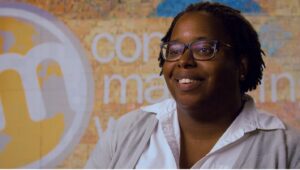
Amanda Subler (09:35):
Michelle, you talk about language of inclusion, why is it important to market to these diverse markets? So they feel included? And tips on communicating to these audiences so they buy into your brand.
Michelle Ngome (10:08):
So, we know language is important. Language is how we navigate the world, whether it’s on the macroscale or the microscale. If you think about your workplace, right? I’m sure there’s internal language that your company uses that if you were to step outside of that, they’d be like, what are you talking about? Right. Especially with acronyms. It’s like, what does that stand for?
So, language is how we communicate. And I think with that, we just have to be mindful of not just the actual words, but our tone, you know, how are we gonna be intentional when we are communicating, when we are writing this caption or this blog post, or when we’re creating this visual to target this diverse community. Another thing that’s really big right now is using your pronouns, right? So, LinkedIn has done a good job, allowing individuals to include their pronouns on their profile. And you see it, people do that on Zoom and Slack and you know, these different platforms. And I really feel like your intention has to meet your impact, right? Whether it’s an individual or a collective. So that is why language is important. You wanna make sure that you’re communicating properly. And you just can’t have a picture of a black person, right. Of maybe a black person having fun, but then you have this negative language and you’re like, oh, you know, we’re being diverse in our marketing. No, everything has to align with the language. Plus, the visual provides content alignment.
Amanda Subler (11:59):
Let’s talk about creating inclusive marketing teams. So why is it so important to have a diverse, inclusive team? And what’s maybe something to consider when you actually are trying to create that.
Michelle Ngome (12:27):
So, I think this is really the foundation is the marketing team has to talk to the HR department. Right. You know, what do we need? What are the gaps within the marketing team and what needs to be filled? Because creating that inclusive team is gonna help you come up with the visual content, the language, right? What are those things that you need to kind of run by? One thing that I realized, especially in the social media world, what culture influences, right? Whether it’s black hip-hop, Gen Z, you know, culture moves and dictates these trending topics that we see as marketers. It’s kind of funny. I think I’m about six or seven years older than my best friend. And I was like, well, I keep you around cuz you keep me hip. Right. So younger people dictate the culture, they influence things, right?
That’s why I like going back and talking to colleges all the time. Cause it’s like, Hey, what’s what’s going on around here? But when you have someone from Gen Z, they’re gonna tell you what’s hot. They’re gonna tell you what’s trending. If you have an African American person, maybe a Jewish person, and you’re trying to create this campaign, you’re gonna be more mindful of the representation you need on your website, in the video. Or maybe you’re doing something, but because you’re not part of the culture, you don’t know what’s wrong. But if you do have an inclusive team they’re gonna be able to fact-check you. And those are the important things. Why you need to have an inclusive team.
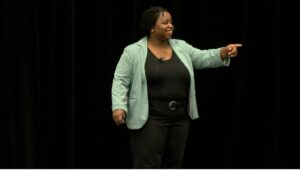
Amanda Subler (14:04):
Are there any tips for creating that team? Anything to consider?
Michelle Ngome (14:11):
So, one thing you wanna be mindful of, and this is really important, determining if you’re a marketer working for a brand or working for an agency. So, you wanna know, who is your audience? This can be your consumer audience, or it can be your client-facing audience. So, who’s your audience? What are the types of campaigns or just overall marketing work that you are working on. And then from that, you’re probably gonna wanna find, people that represent that communities. Right? So, there’s a lot of organizations. One thing with African American Marketing Association, we have a job board, there’s a bunch of black marketing groups. There are a few Hispanic marketing groups, freelancer groups- like different communities that you’ll need to find to kind of pull from whether it’s about hiring or even finding influencers or consultants to kind of help you on the project that you’re working on.
Amanda Subler (15:27):
Jackson says, language is an identity. It provides a big room for people to resonate with content. For sure. Alexandra says “excited to see her (Michelle) leading this conversation.” And Pierre, he shared a great, resource. He did the presentation on how the history of African American consumer market has evolved as part of the Juneteenth profile. So, he’s got that up there. Pierre says marketing has emphasized psychographics. So that includes understanding cultural values as much as demographic metrics to your audience. Great point as well.


Amanda Subler (16:16):
You say, and you talk about this in one of your presentations is that you can make changes in your company and it doesn’t, sometimes it can be overwhelming to make a big change, but you can be making small incremental changes. That is important as well. You say you can start small too.
Michelle Ngome (16:43):
Yes, absolutely. I think that’s one of the toughest things in this climate right now. There’s a very blurred line between marketing and advertising. So lots of times when we think about campaigns, we think about the advertising campaign. We think about the commercial that we see whether it’s online or on TV. So, a lot of small business owners are like, okay, how can I become inclusive? So, one, I go back to the visuals, right. Whether it’s your website, about you and the business or just your blog post, making sure that you have diverse, engaged pictures on your blog post. You’re just more mindful about your blog post on what you’re writing and how you’re writing. Is your website accessible to, people with disabilities, neurodiversity, things of that nature. That’s another thing.
One of the most important things I think small business owners can do when it comes to diverse marketing is getting involved with your community. When I worked, when I was a marketing manager at a law firm, as far as size, we were a small law firm, but we created a diversity in law scholarship. So we already had two scholarships. Now we created a new one specifically for, the BIPOC community, right? So little things like that goes a long way and, you know, look, not everyone can compete with Nike-these big brands, but I’m pretty sure there’s something that you can do, within your community that can make a difference. Even, even if it’s volunteering. Maybe you volunteer or you mentor for an organization, a BIPOC organization that says a lot.
